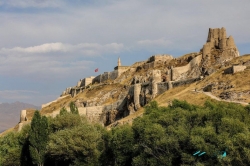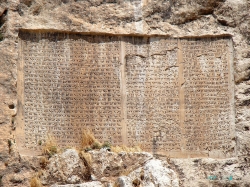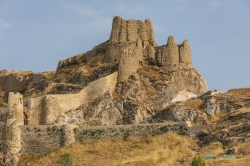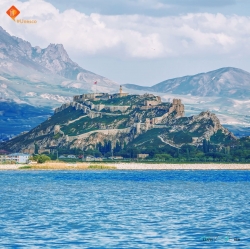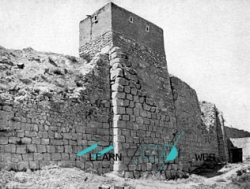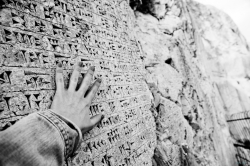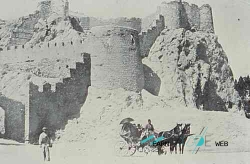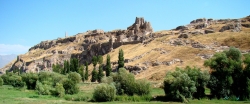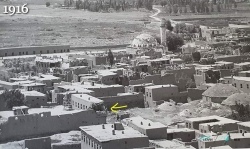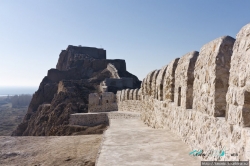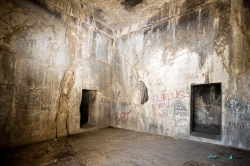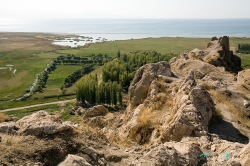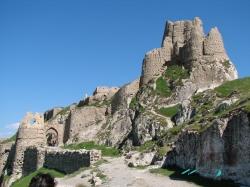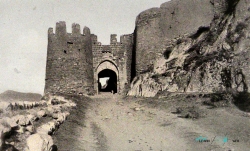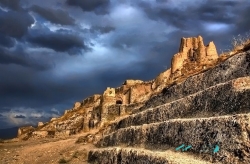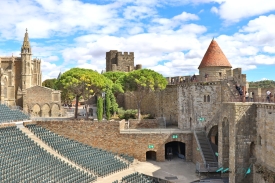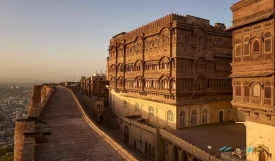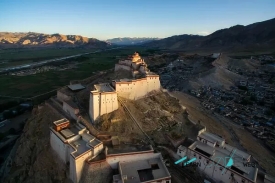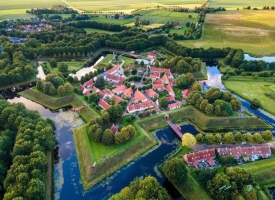ABOUT Van Fortress
Van Castle is a fortification structure that was built by the Urartian Kingdom out of stone and has a bird's eye view of the Urartian capital Tuspa. Located on the shores of Lake Van and 5 km from the city of Van, this castle was built on a steep cliff. The building is 1800 m long, 120 m wide and 80 m high. The castle was founded in the 9th century BC by Sarduri, son of Lutipri, between 840 BC and 825 BC. A large number of such fortifications are found in present-day Armenia, Turkey and Iran. Generally, such structures are built in the rocks and slopes that are exposed to the earth.
These fortresses were used as a means of occupation of the region, rather than a defense against foreign armies. The ruins of this fortress stand outside the modern town of Van, where they support walls built in medieval times.
A trilingual inscription dating from the 5th century BC. AD attributed to Xerxes the Great is inscribed on a smooth part of the rock face, about 20 meters above the ground near the fortress. The niche was dug by Xerxes' father, King Darius, but the surface was left in a rough state. The inscription has survived in near perfect condition and is divided into three columns of 27 lines written (left to right) in Old Persian, Babylonian, and Elamite. It is the only known royal Achaemenid inscription located outside of Iran. Other cuneiform inscriptions are generally inaccessible except to large groups of tourists. It states that:
“Ahura Mazda is the greatest of the gods, who created this earth here, who created this sky there, who created man, who created happiness for man, who made Xerxes king, unique king of many, sole ruler of many.
I am Xerxes, the great king, the king of kings, the king of countries sheltering all kinds of peoples, the king of this great Earth to its borders, the son of king Darius, the Achaemenid.
King Xerxes said: King Darius, my father, by the will of Ahura Mazda built a lot of good things, and gave the order to dig this niche, but because he did not make an inscription, i ordered that this registration be made.
May Ahura Mazda with the other gods protect me, my kingdom, and my work."
When it was published by Eugène Burnouf in 1836, by its realization which included a list of the satrapies of Darius (repeated by Xerxes in almost identical language), he was able to identify and publish an alphabet of thirty letters, of which the most have been correctly deciphered. Burnouf's reading of Van's trilingual inscription made a significant contribution to the deciphering of Old Persian cuneiform.
These fortresses were used as a means of occupation of the region, rather than a defense against foreign armies. The ruins of this fortress stand outside the modern town of Van, where they support walls built in medieval times.
A trilingual inscription dating from the 5th century BC. AD attributed to Xerxes the Great is inscribed on a smooth part of the rock face, about 20 meters above the ground near the fortress. The niche was dug by Xerxes' father, King Darius, but the surface was left in a rough state. The inscription has survived in near perfect condition and is divided into three columns of 27 lines written (left to right) in Old Persian, Babylonian, and Elamite. It is the only known royal Achaemenid inscription located outside of Iran. Other cuneiform inscriptions are generally inaccessible except to large groups of tourists. It states that:
“Ahura Mazda is the greatest of the gods, who created this earth here, who created this sky there, who created man, who created happiness for man, who made Xerxes king, unique king of many, sole ruler of many.
I am Xerxes, the great king, the king of kings, the king of countries sheltering all kinds of peoples, the king of this great Earth to its borders, the son of king Darius, the Achaemenid.
King Xerxes said: King Darius, my father, by the will of Ahura Mazda built a lot of good things, and gave the order to dig this niche, but because he did not make an inscription, i ordered that this registration be made.
May Ahura Mazda with the other gods protect me, my kingdom, and my work."
When it was published by Eugène Burnouf in 1836, by its realization which included a list of the satrapies of Darius (repeated by Xerxes in almost identical language), he was able to identify and publish an alphabet of thirty letters, of which the most have been correctly deciphered. Burnouf's reading of Van's trilingual inscription made a significant contribution to the deciphering of Old Persian cuneiform.
The Best Pictures of Van Fortress
Videos of Van Fortress






